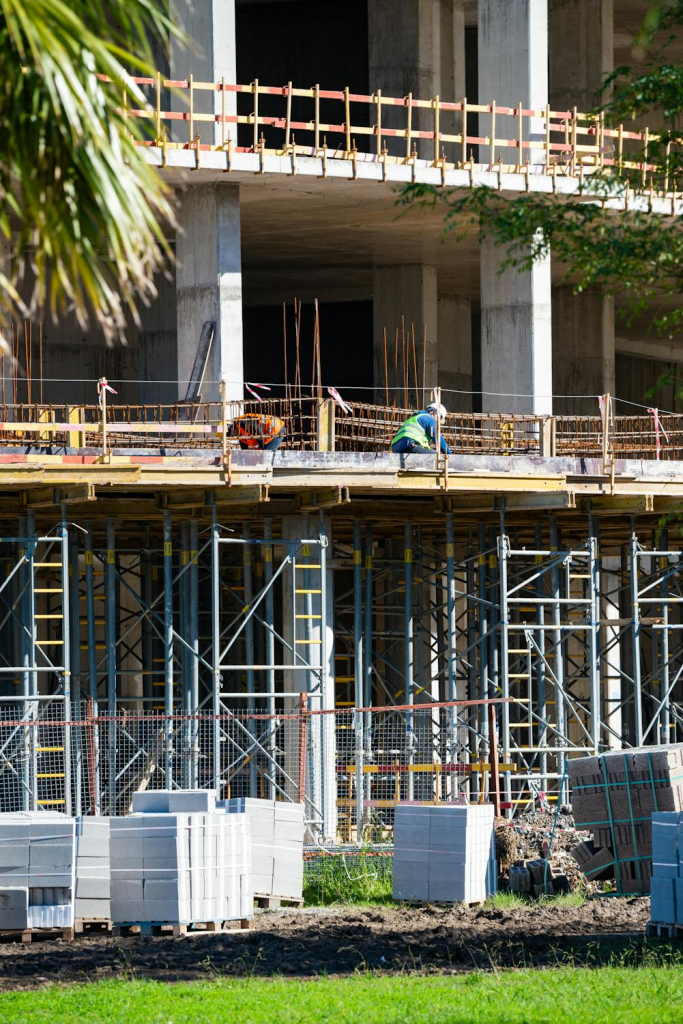Building renovation has become increasingly common as cities expand, infrastructure ages, and people seek modern and functional living and working spaces. Whether it’s a small home improvement project or a large-scale commercial restoration, renovation plays a vital role in improving the quality of our built environment.

The motivations for renovation range from enhancing the aesthetic appeal of space to improving energy efficiency and addressing safety concerns. This article will explore the primary purposes of building renovation, how it impacts property value, and the long-term benefits it offers.
What Is The Purpose Of Building Renovation?
Renovation serves multiple purposes, all of which aim to improve a building’s structure, functionality, or visual appeal. These reasons may vary based on whether the renovation is for residential, commercial, or public buildings, but several key purposes consistently apply across different types of properties.
Extending The Lifespan Of The Building
One of the most common reasons for undertaking a renovation project is to extend the lifespan of an existing structure. Over time, buildings experience wear and tear due to environmental factors, usage, and age. Materials such as roofing, plumbing, and electrical systems degrade, requiring updates or replacements.
Renovating can prevent further deterioration and ensure the building remains safe and functional for years to come. It can also involve retrofitting buildings with modern materials that are more durable and sustainable than those used in the original construction.
Improving Safety And Compliance With Regulations
Safety is a paramount concern in any building, and regulations often change over time to address new risks. Renovation can help bring an outdated building up to current safety codes and standards. This is particularly important for older buildings that may have been constructed before modern safety practices were implemented.
Renovating can involve installing fire suppression systems, improving structural integrity, adding accessible features, and removing hazardous materials like asbestos or lead-based paint. By ensuring compliance with the latest regulations, renovation can significantly improve the safety and habitability of a building.
Enhancing Energy Efficiency
Energy efficiency has become a major focus in building renovations, particularly as the world seeks to reduce its carbon footprint. Renovating an older building with outdated systems can lead to significant energy savings and environmental benefits.
Installing energy-efficient windows, upgrading insulation, and incorporating renewable energy systems such as solar panels are just a few ways renovation can reduce energy consumption.
Additionally, energy-efficient buildings typically have lower operating costs, making them more attractive to potential buyers or tenants.
Boosting Aesthetic Appeal
Aesthetic preferences evolve, and the design of buildings constructed decades ago may no longer meet the expectations of modern occupants. Renovation offers an opportunity to update the look and feel of a space, whether through a complete redesign or smaller cosmetic improvements.
Changing layouts, adding contemporary finishes, and using new materials can breathe new life into an aging structure. For homeowners, a more modern and attractive home can increase personal satisfaction and enjoyment of the space, while businesses may find that a refreshed building attracts more customers and clients.
How Does Building Renovation Impact Property Value?
Renovating a building can have a significant impact on its overall value. Whether you’re a homeowner looking to sell or an investor managing commercial properties, the value added by renovations often outweighs the initial cost. Here are a few ways building renovation can directly affect property value:
Increased Market Appeal
One of the most immediate benefits of renovation is the increased appeal of a building to potential buyers or tenants. A building that has been recently renovated is likely to attract more interest, as it offers updated features, better functionality, and a more modern aesthetic.
Buyers are often willing to pay a premium for properties that require little to no additional work, as it saves them time, effort, and expense.
For commercial properties, renovations that improve space functionality, aesthetics, or energy efficiency can attract higher-paying tenants and extend the length of leases. In competitive markets, buildings that stand out because of their modern design or energy-saving features have a distinct advantage.
Higher Resale Value
Renovations generally increase the resale value of a property, particularly if they address major functional or aesthetic issues. Kitchens, bathrooms, and outdoor spaces tend to offer the highest return on investment for residential properties.
Modern, updated homes are highly sought after, and buyers are often willing to pay more for features such as open-plan living spaces, contemporary kitchens with smart appliances, and energy-efficient upgrades.
For commercial properties, renovations that improve accessibility, and energy efficiency, or provide additional usable space can increase the overall market value. Investors looking for long-term returns often prioritize buildings that have been renovated to reduce maintenance costs and meet current market demands.
Energy Savings And Long-Term Value
As energy efficiency becomes more important to both individuals and businesses, buildings that have undergone energy-efficient renovations may see their property value increase. These renovations can include installing energy-saving windows, upgrading HVAC systems, adding insulation, or even implementing renewable energy sources like solar panels.
Not only do these changes reduce energy costs for occupants, but they also make the property more attractive to environmentally-conscious buyers and tenants. Over time, these improvements can lead to a higher resale value and lower operational costs, offering both immediate and long-term financial benefits.
What Are The Long-Term Benefits Of Renovating?
Renovating a building is an investment that goes beyond immediate aesthetic improvements. While the short-term benefits such as enhanced functionality and visual appeal are often the focus, the long-term advantages are equally significant.
Reduced Maintenance Costs
Older buildings generally require more frequent repairs and maintenance, which can become a financial burden over time. Renovating allows property owners to address structural and mechanical issues before they become costly emergencies.
Updating plumbing, electrical systems, roofing, and insulation can reduce the likelihood of expensive repairs down the line. By investing in high-quality materials and modern construction techniques during the renovation process, property owners can enjoy reduced maintenance costs over the life of the building.
Increased Comfort And Livability
For residential properties, comfort is a key factor in determining the quality of life for occupants.
Renovations that improve heating and cooling systems, upgrade windows, or reconfigure living spaces can significantly enhance comfort levels within a home. Modernizing kitchens, bathrooms, and living areas not only makes a home more functional but also creates a more enjoyable environment for everyday living.
For commercial buildings, renovations can improve employee satisfaction and productivity. Well-designed, energy-efficient spaces that offer better lighting, improved air quality, and more ergonomic layouts are known to foster higher levels of comfort, ultimately contributing to a better work environment.
Sustainability And Environmental Impact
Sustainability is increasingly a priority for both homeowners and businesses. By renovating to incorporate energy-efficient systems, sustainable materials, and environmentally-conscious design, property owners can significantly reduce their environmental footprint.
Buildings that consume less energy and use sustainable materials are not only better for the planet, but they also tend to attract environmentally-conscious buyers and tenants. Additionally, green buildings often qualify for tax incentives and rebates, further enhancing their financial benefits.
Conclusion
Building renovation serves a wide range of purposes, from extending the lifespan of property and improving safety to boosting aesthetic appeal and enhancing energy efficiency. The impact of renovation on property value is profound, often leading to increased marketability, higher resale values, and long-term cost savings.
Moreover, the long-term benefits of renovation, including reduced maintenance costs, improved comfort, and sustainability, make it a worthwhile investment for both homeowners and commercial property owners alike.
Whether driven by necessity or desire for improvement, building renovation remains a key factor in maintaining the quality and functionality of the built environment for generations to come.
Click the Source for more information.
